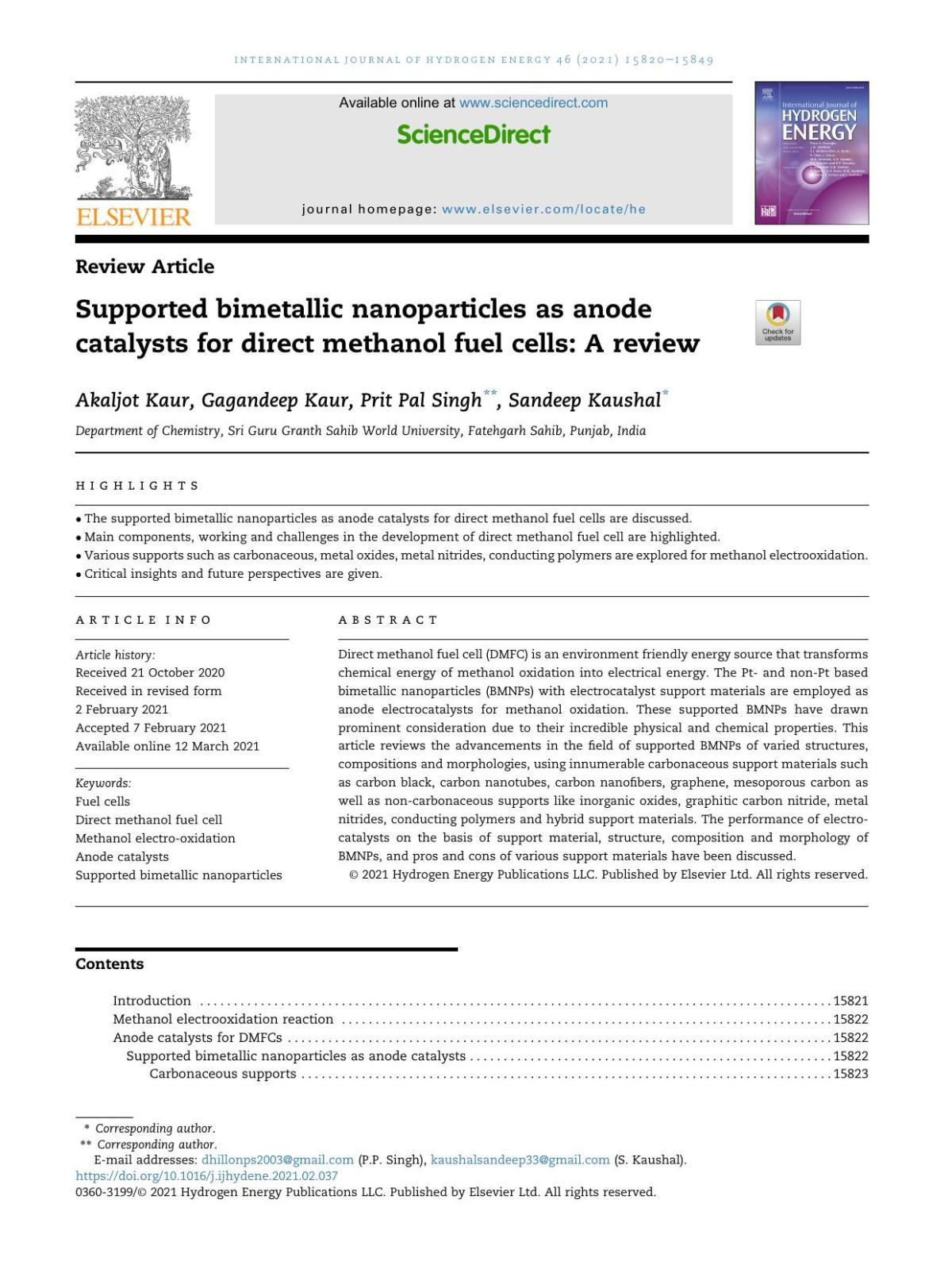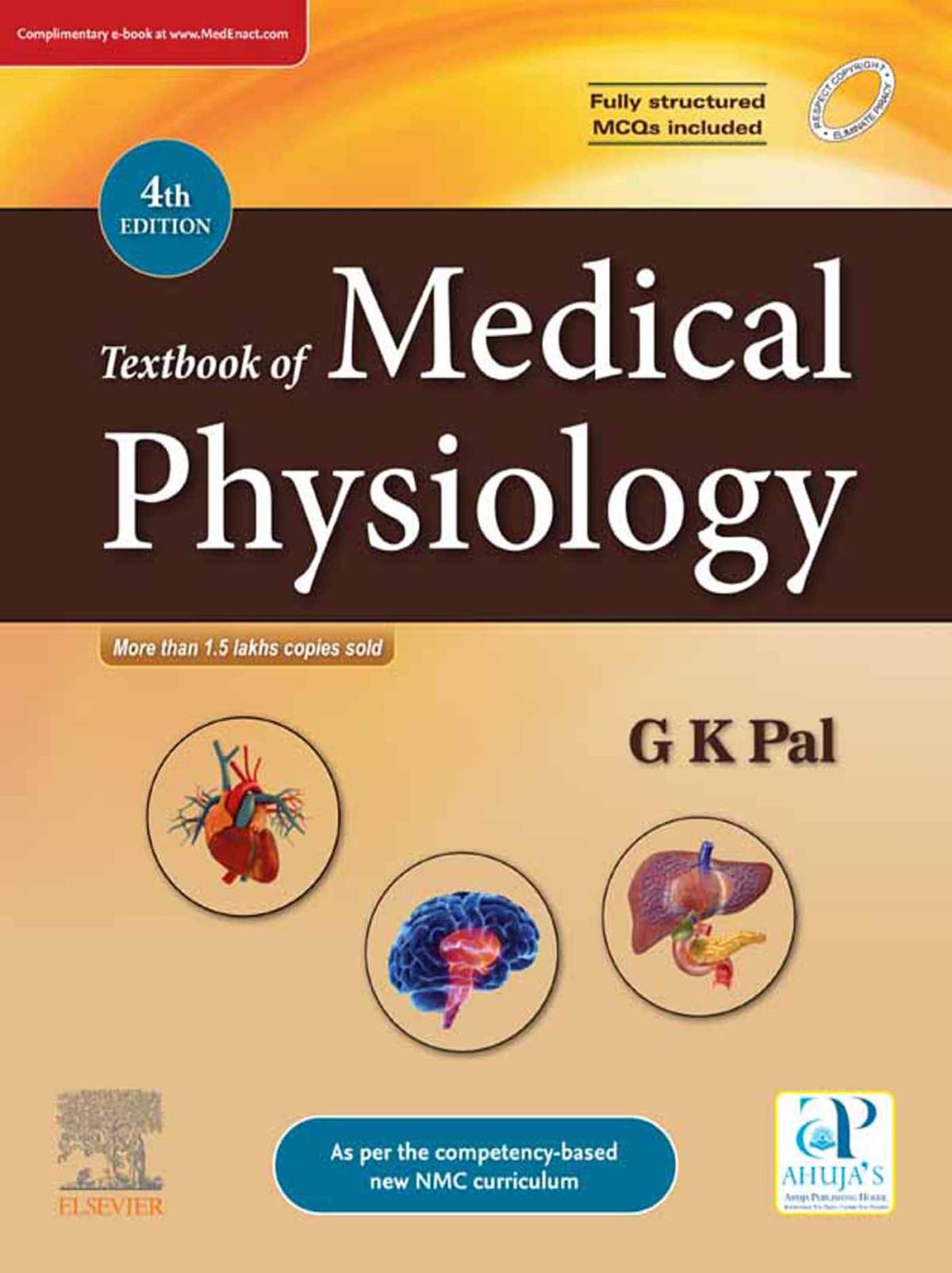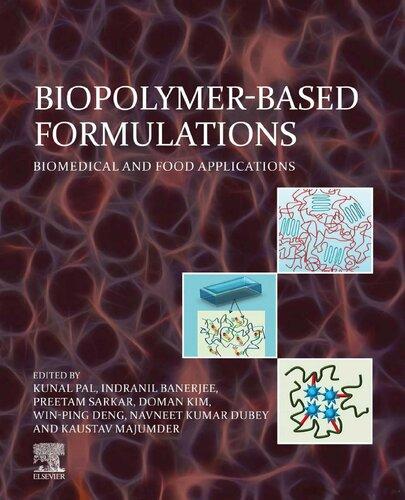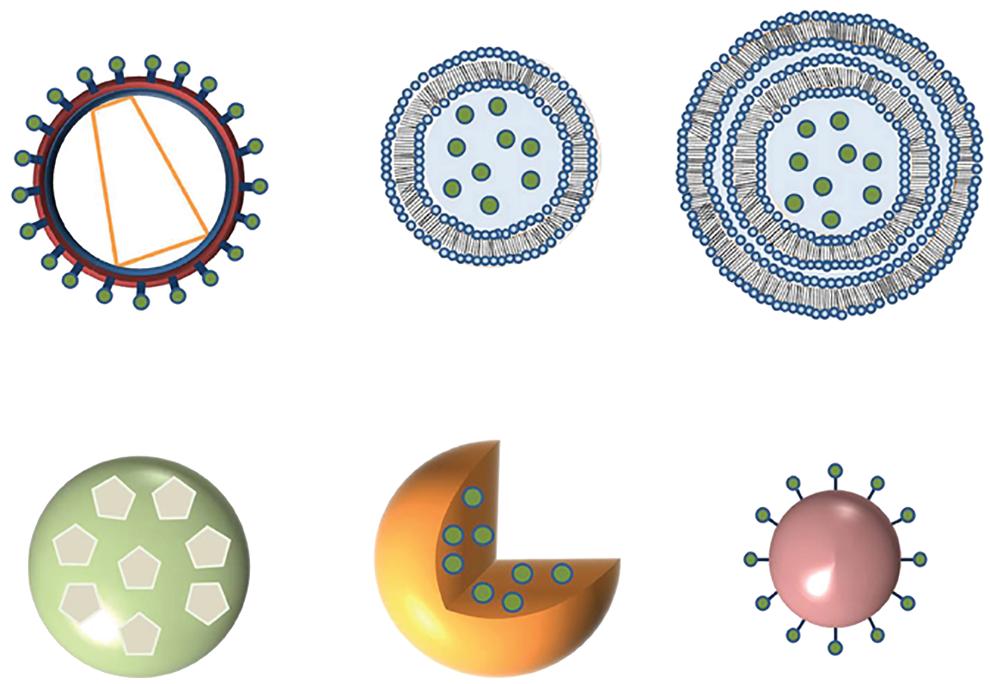Nanovaccinology as Targeted Therapeutics
Edited by Kaushik Pal
University Centre for Research and Development (UCRD), Department of Physics, Chandigarh University, Mohali, Punjab, India
This edition first published 2022 by John Wiley & Sons, Inc., 111 River Street, Hoboken, NJ 07030, USA and Scrivener Publishing LLC, 100 Cummings Center, Suite 541J, Beverly, MA 01915, USA © 2022 Scrivener Publishing LLC
For more information about Scrivener publications please visit www.scrivenerpublishing.com.
All rights reserved. No part of this publication may be reproduced, stored in a retrieval system, or transmitted, in any form or by any means, electronic, mechanical, photocopying, recording, or otherwise, except as permitted by law. Advice on how to obtain permission to reuse material from this title is available at http://www.wiley.com/go/permissions.
Wiley Global Headquarters
111 River Street, Hoboken, NJ 07030, USA
For details of our global editorial offices, customer services, and more information about Wiley products visit us at www.wiley.com.
Limit of Liability/Disclaimer of Warranty
While the publisher and authors have used their best efforts in preparing this work, they make no representations or warranties with respect to the accuracy or completeness of the contents of this work and specifically disclaim all warranties, including without limitation any implied warranties of merchantability or fitness for a particular purpose. No warranty may be created or extended by sales representatives, written sales materials, or promotional statements for this work. The fact that an organization, website, or product is referred to in this work as a citation and/or potential source of further information does not mean that the publisher and authors endorse the information or services the organization, website, or product may provide or recommendations it may make. This work is sold with the understanding that the publisher is not engaged in rendering professional services. The advice and strategies contained herein may not be suitable for your situation. You should consult with a specialist where appropriate. Neither the publisher nor authors shall be liable for any loss of profit or any other commercial damages, including but not limited to special, incidental, consequential, or other damages. Further, readers should be aware that websites listed in this work may have changed or disappeared between when this work was written and when it is read.
Library of Congress Cataloging-in-Publication Data
ISBN 978-1-119-85734-1
Cover image: Pixabay.Com
Cover design by Russell Richardson
Set in size of 11pt and Minion Pro by Manila Typesetting Company, Makati, Philippines
4
Pushpalatha C., Chhaya Kumar, Sowmya S.V., Dominic Augustine, Elizabeth Abbu Varghese and Jithya Suresh
4.1
4.5
5.1
5.4
5.5
6 Preclinical and Commercial Trials of Cancer Diagnosis
Sowmya S.V., Pushpalatha C., Dominic Augustine, Sibikar P., Bharkhavy K.V. and Elizabeth Abbu Varghese
6.1
6.2 Role of Nano-Imaging in Cancer Diagnosis, Progression, and Treatment
6.2.1
6.2.2
6.2.3
6.2.4
6.2.5
6.2.6
6.3 Challenges in the Translation of Nanotechnology-Based Imaging Methods Into Clinical Application
6.4 Nanovaccines for Cancer Immunotherapy
6.4.1
6.4.1.1
6.4.1.2
6.4.1.3
6.5
6.6
6.5.1
6.5.2 Co-Delivery of Antigens and Adjuvants via Nanocarriers
6.5.3 Nanocarriers Potentiate Immunomodulation Through Multivalent Antigens and/or Adjuvants
6.5.4 Self-Adjuvanted Nanocarriers
6.6.1
6.6.2
6.6.3
6.6.4 aAPCs
6.6.5 Nanovaccines for Combination Therapy
6.7 Preclinical and Clinical Trials of Applications of Nanoimaging and Nanovaccinology in Cancer
6.8 Recent Developments in the Trials of Nanovaccinology in Cancer
6.9
6.10
7 Biomedical and Electronic Tune-Ups of 2C4NA
Nanocrystalline Sample
Maalmarugan J., Egbert Selwin Rose A., Anbarasan P., Poorani R., Aarthi N., Ganesan H., Senthil Kannan K. and Flora G.
7.1 Introduction
7.2 Computational, Tribological, Fluorescence, and Influx Study
7.3 Antidiabetic (AD) Study, Anticancer Study, and Anti-Inflammatory Study
7.4
8 Biological, Electronic-Filter, Influx and Theoretical Practicalities of 2-Chloro-6-Nitroaniline (2C6NA)
for Biomedical and Microelectronics Tasks
Maria Sumathi B., Maalmarugan J., Ganesan H., Saravanan P., Patel R.P., Sheeba M., Flora G. and Senthil Kannan K.
8.1
8.2
8.3
8.4
9 Antidiabetic, Anti-Oxidant, Computational, Filter, and Tribological Characterizations of Bis Glycine Lithium Bromide Monohydrate Nano (32 nm) Scaled Crystals
Dayana Lobo F., Senthil Kannan K., Mathivanan V., Jacintha Tamil Malar A., Christy S., Flora G., Ganesan H. and Maalmarugan J.
9.1
9.2
9.3
9.3.1 Single Crystalline XRD (SXRD) Study and Powder XRD (PXRD) Studies
9.3.2 Fluorescence (FL) Study for 32-nm Scale
9.3.3 Antidiabetic (AD) Study and Influx Study
9.3.4 AO-DPPH, FRAP of Antioxidant
9.3.5 Tribology—Load Capacity by the Compressive Strength Model of the Polymeric Bearings,
10 Device Utility, Energy, and Bioutility of N2MNM4MBH
Pauline Jenifer S., Flora G., Zozimus Divya Lobo C., Charles A., Senthil Kannan K., Anbuvel D., Prajith V. and Jemma Hermelin Jesy Diaz 10.1
11 Biocurative, Tribological, Electro-Functionalities
Senthil Kannan K., Prabhjeet Kaur Dhillon, Jemma Hermelin Jesy Diaz, Padmavathi P., Flora G., Irudhya Sahaya Lancy S., Jeeva Rani Thangam G. and Sheeba M. 11.1
12 Nanotubular Device Effect, Super Cell Effectiveness, Hirshfeld Energy Analysis and Biomedicinal Efficacy of
Flora G., Munikumari A., Sheeba M., Jemma Hermelin Jesy Diaz, Senthil Kannan K., Ponrathy T., Muthu Sheeba M. and Joshua Steve Abishek B.
12.1
12.3.1
13 Nano, Peptide Link, Pharma Impact and Electron Density of AMPHB Macro, Nano Crystalline Samples
Senthil Kannan K., Dayana Lobo F., Gayathri A., Prathebha K., Jacintha Tamil Malar A., Maria Sumathi B., Flora G. and Egbert Selwin Rose A.
13.1
(AD),
(AI), and Anti-Fungal (AF) Effect of AMPHB
14 Super Lattice, Computational Interactions and Bio-Uses of
Flora G., Christy S., Shobana V., Divya R., Jemma Hermelin Jesy Diaz, Pauline Jenifer S., Senthil Kannan K. and Jacintha Tamil Malar A.
15 Biological Effect Nanotubular, Vanderwall’s Impact, of 4-Methyl-2-Nitroaniline (4M2NA) Nanocrystals
Senthil Kannan K., Pauline Jenifer S., Divya R., Raju K., Gayathri A., Jemma Hermelin Jesy Diaz, Maria Sumathi B. and Flora G.
15.1
15.3 Biological Activity: Antidiabetic (AD), Anti-Inflammatory (AI), and Antifungal (AF)
15.4
Flora G., Ganesan H., Maalmarugan J., Egbert Selwin Rose A., Dayana Lobo F., Divya R., Senthil Kannan K. and Sheeba M.
16.1
Amjad Islam Aqib, Tean Zaheer, Muhammad Usman, Muhammad Arslan and Khazeena Atta
Dominic Augustine, Pushpalatha C., Sowmya S.V., Chhaya Kumar, Elizabeth AbbuVarghese and Gayathri V.S.
Preface
Nanovaccinology as Targeted Therapeutics explores recent breakthroughs in the exciting new field of micro- and nanofabricated engineered nanomaterials. In addition to spectroscopic characterizations, significant topics for interdisciplinary research, especially in the fields of nanogels, which deal with polymer chemistry, nanotechnology, materials science, pharmaceuticals, and medicine are explored, where their small dimensions prove highly advantageous. Nanovaccinology could potentially revolutionize conventional therapy and diagnostic methods due to its superior effectiveness over its macro-sized counterparts in almost all biomedical areas. Strong interest in this novel class of material has driven many studies to discover biogenic production methods and new areas of potential utilization in this area. Therefore, it is important to keep abreast of the development of these biomedical research aspects highlighted in the 19 chapters of this book written in diverse fields of studies, and their emerging applications utilized in next-generation techniques.
The last few decades have witnessed progress being made in the treatment of chronic human diseases via precise site-specific drug delivery. Infectious diseases are the leading cause of deaths worldwide, having a significant impact on public health and the socioeconomic development of the human population. The serious threat to public health and safety posed by the rapid development of drug resistance by pathogens to currently available therapies, as well as the significant side effects that result from their prolonged treatment, are reviewed throughout this book. In addition, trends and future prospects of tools utilized in nanomedicine and nanovaccinology research for targeted drug delivery are explored as well.
In Chapter 1, a special emphasis is given to the investigations exploring recent achievements of polymeric nanoparticles, liposomes, emulsions, and carbon-based nanomaterials in vaccine delivery systems. The biocompatibility, toxicity, and stability of nanotechnology-based vaccine delivery systems are also discussed. Chapter 2 discusses novel biomedical therapy approaches to nanomedicine and nanovaccine drug delivery tools,
which, although relatively new, are transforming biomedical research at a rapid pace. They are critical platforms for controlled delivery of therapeutic drugs to the targeted sites. Chapter 3 is a unique attempt to analyze the possibilities of producing nanovaccines against notorious superbugs that pose a serious threat to humans, as many of the currently available antibiotics are not effective in treating the diseases they cause. Nanotoxoids, liposomes, VLPs, OMVs, etc., are included in some of the approaches to get biomimetic nanovaccines. Their advantages and limitations when compared to traditional vaccines are progressively illustrated.
Chapter 4 highlights the fact that nanotechnology has accelerated the evolution of newer vaccines that are safe and highly effective in eradicating SARS-CoV2. Simultaneously, nanovaccines have recently been developed in which new drugs can be accommodated through nanoparticle carriers. The similar nanosize of the nano-scaled materials and pathogens ensures optimal trigger response of the immune system, resulting in satisfactory cellular and humoral immunity responses. Targeted delivery of nanoparticles results in enhanced antibody response, improved stability coupled with longer duration drug release and prolonged immunogenic memory. Chapter 5 looks at the usefulness of nanovaccines for treatment of the deadliest diseases, including cancer, tumors, bacterial, viral and parasitic diseases, and autoimmune diseases. Moreover, it also provides information about the importance of nanoscience in the invention of various safe, potent, stable, inert and biocompatible drug discoveries.
Chapter 6 focuses on the current preclinical and clinical trials in nanoimaging and nanovaccines that are applicable to cancer immunotherapy. The recent advances in anti-cancer nanovaccines using nanocarriers constitute a delivery breakthrough expected to play a vital role in improving the stability and immunogenicity of antigens. Chapter 7 demonstrates a novel way of using nanoscale 2C4N crystals against diabetes, fungal, and inflammatory diseases, and for drug analysis with optimization; and gives the order of the lattice with ORTEP. Chapter 8 illustrates the ways in which the presence of aniline in a compound enhances antidiabetic, antifungal, and anti-inflammatory activity, which is a novel trend in recent work for nanocrystalline specimen with an IC50 value of 43 nm.
Chapter 9 denotes the recent use of macro- and nanoscale crystals of BGLBMH mainly as a novel antidiabetic agent as well as antioxidant utility with its monoclinic, P21/c form of system with band gap of 3.139 eV. Chapter 10 focuses on the organic, crystalline N2MNM4MBH efficacy at a macro/nano-level for drug use in alpha-amylase and alpha-glucosidase enzymes against diabetes. Chapter 11 discusses the use of ZnO nanoparticles from Mangifera indica as ZnO-MIZN for E. coli, S. typhi and S. aureus
Preface xvii
inhibition zones in mm and for novel biouse as antibiotic and antidiabetic agents. Chapter 12 discusses the novel use of 2F5NA crystals in nanotube production, and antidiabetic, antifungal, anti-inflammatory interactive lattice with HF/B3LYP.
Chapter 13 discusses the use of 2-Amino-4-methylpyridinium 4-hydroxybenzoate (AMPHB) crystalline macro- and nano-scaling for nanotube generation as well as device fabrication, and as an antidiabetic, antifungal and anti-inflammatory therapeutic. Chapter 14 describes a crystalline sample of CPDMDP with base monoclinic system used for computational interaction that acts as a novel base for antidiabetic and antioxidant vaccine, with the presence of pyrazole. Chapter 15 discusses the novel modus operandi of preparing a 4M2NA crystalline sample by evaporation for an antidiabetic–insulin response and an antifungal, anti-inflammation effect with proper optimization. Chapter 16 discusses the use of Mangifera indica–AgO-MIZN of 43 nm used as a vaccine/drug for cancer and bacterial and fungal infections.
Chapter 17 discusses the recently surfaced nanotechnology used to resolve vaccine failures that mainly arise as a result of weak immunogenicity of vaccines, in-vivo instability, the need for multiple jabs, and toxicity. Liposomes, emulsions, polymeric nanoparticles, and graphene oxide nanosheets are some examples of nanovaccines. The chapter more or less summarizes the hopes as well as the gaps that need to be filled in order to achieve the targeted proposals. Chapter 18 implies that the old vaccine strategy fundamentally involves the method of utilizing either inactivated (killed) or live attenuated antigens. Live attenuated vaccines for clinical disease arise from mutated/same genotypes, while nanoparticles with higher surface properties enable them to strengthen the immune system and immunological response. Finally, Chapter 19 comprehensively covers the evolution of nanovaccines and their morphology, carriers used, formulation as well as characterization, and the role of nanovaccines in immunotherapy, with an emphasis on recent advances.
Though development of nanovaccines is still in the infancy stage, with only a few in the early phases of clinical trials, we firmly believe this new generation of vaccines has great potential for the prevention and treatment of many diseases. The information provided in this book further highlights some of the improvements in this span of work, focusing on the factors that limit nanovaccines’ efficiency in optimization. Remarkable strategies to employ assemblies of the various biogenic schemes of nanovaccines are also illustrated in this book. Thus, it may become clear to all readers that vaccinology‐enabled renewable energy technologies are starting to scale up dramatically. As it matures and becomes more cost-effective in the
decades to come, bio-nanotechnology could eventually replace the traditional, environmentally unfriendly biomaterials and improve the performance of the biogenic industry through utilization of nanomedicine to manufacture nontoxic, highly durable materials that are cost-effective. To aid in this discovery process, this book provides an overview of key current developments that will direct future research attempts towards utilization of such tailored nanovaccinology that will play an essential role in achieving the desired goal of cheap and efficient vaccine production.
This book also covers the hottest topics based on nanovaccinology applications in the field of therapeutics and nanodetectors as per biomedical applications. It is enhanced by the welcomed contributions of biotechnologists, nanotechnologists, biochemists, medical biologists, pharmacists, materials scientists as well as academicians and research scholars. There is every indication that with appropriate liability and regulation alongside the topics, commercial production of manufactured novel composite materials can be realized. Furthermore, the diverse brilliant innovations and explorations highlighted throughout the entire book can modulate spectroscopic performances with technical excellence in the inter- and cross-multidisciplinary research of high competence.
Lastly, I would like to express my overwhelming gratitude to all the authors and co-authors for their excellent research contributions to this book. I also wish to thank the entire team at Wiley-Scrivener for their consistent support during even the most difficult stages of its publication. I am confident that within a short period of time the eBook series will be very popular in university and institute libraries worldwide, and hopefully will be highly cited in coming years.
Dr. Kaushik Pal May 2022
Nanotechnology in Vaccine Development and Constraints
Tahmina Foyez1
and Abu Bin Imran2*
1Department of Pharmaceutical Sciences, School of Health and Life Sciences, North South University, Dhaka, Bangladesh
2Department of Chemistry, Bangladesh University of Engineering and Technology, Dhaka, Bangladesh
Abstract
Generally, vaccinations are the most efficient prophylactic measures against infectious diseases. Despite the obvious advantages of vaccines, optimizations are required due to poor immunogenicity, instability, toxic effect, and the necessity for multiple dose of a vaccine. Nanotechnology have currently been introduced into vaccination research to address these difficulties. The nanotechnology in vaccine development can improve immune responses. Particle size at the nanoscale is critical for this benefit. Nanoparticles (NPs) used in the formulation of vaccine can improve stability of antigen and immunogenicity while also allowing for targeted distribution. A variety of NPs vaccines have been permitted for human use, with composition, size, shape, and surface qualities. However, obstacles are present because of a lack of proper knowledge of NPs activity in vivo, which can be used as a delivery mechanism to improve antigen processing to boost immunity. We have discussed the recent achievements of nanotechnology in vaccine delivery systems in this chapter, emphasizing the different carriers, such as polymeric NPs, liposomes, emulsions, and carbon-based nanomaterials. The basic knowledge of in vivo biocompatibility, toxicity, and stability of nanotechnology-based vaccine delivery systems has also been discussed.
Keywords: Nanotechnology, nanovaccinology, antigen, antibody, nanoparticles
*Corresponding author: abimran@chem.buet.ac.bd
Kaushik Pal (ed.) Nanovaccinology as Targeted Therapeutics, (1–20) © 2022 Scrivener Publishing LLC
1.1 Introduction
Currently, infectious diseases are the primary cause of mortality. They are caused by microorganisms like viruses, bacteria, fungi, or other parasites. The human immune system fights and removes foreign invading particles [1, 2]. A vaccine is a living, dead, attenuated, inactivated form of a pathogenic microbe, such as a bacterium or virus, or a component of the pathogenic microbe’s structure, which enhances antibody production in the host body but is incapable of causing severe illness [3]. It develops immunity to control and adjust our immune systems from over-reactivity or underactivity [4, 5]. Vaccines have become an everyday part of life, providing a high-impact benefit to human by preventing or managing a wide range of diseases. Vaccine development has a long and glorious history that started late in the 18th century. Louis Pasteur’s laboratory’s first attempts to vaccine development [6]. The development of vaccines is crucial to the successful control of many deadly diseases. However, efficient preventative and therapeutic vaccinations for totally healing lethal diseases and major microbial infections have yet to be produced. On the other hand, critical challenges that need to be addressed include the design, manufacture, and global distribution of vaccines. To design a vaccine, the antigen, adjuvant, manufacturing method, and delivery strategy should be established. Antigen is a pathogen-derived foreign substance that can elicit an immunological response within the host. A vaccine can be classified into four types based on its antigen: live-attenuated vaccine, inactivated vaccine, subunit vaccine, and peptide-based vaccine. Adjuvants are immunomodulatory agents that are used to boost immune reaction. The first adjuvant, aluminum was designed to boost the production of antibodies, making it an excellent choice for vaccine development [7, 8]. If genetic and structural information about microorganisms is known, vaccinations can be developed quickly. Nanotechnology platforms are particularly beneficial in current vaccine development and have accelerated the testing of novel prospective vaccines. Recently nanoparticles (NPs), as vaccine delivery vehicles, have received tremendous attention. Nanovaccine formulations not only improve antigen integrity and immunity, but they also provide selective distribution and sustained release. A wide range of NPs antigens with varying physicochemical properties have been authorized for clinical use [9–11]. The primary goal of using NPs delivery methods is to delay antigen presentation and uptake by dendritic cells (DCs), resulting in immediate DC activation [9, 11, 12]. Antigen and adjuvant are also protected
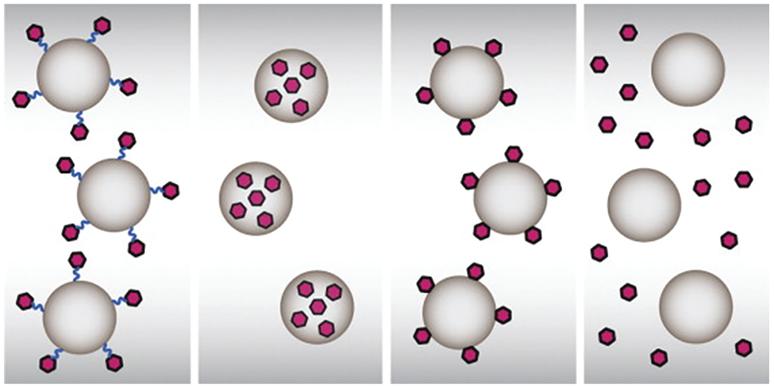
Nanotechnology has opened the way for developing novel vaccines based on nanomaterials, which have unique qualities and serve as antigenic delivery systems and immunomodulatory substances. Multiple research groups in the area are developing nanovaccines for a variety of diseases, and tremendous advantages from this nanotechnology are expected in the coming decades for both animal and human health. Conjugation
from early enzyme and protease degradation by NPs [13]. Vaccine antigens can be administered to the target site by enclosing them in NPs or conjugated particles (Figure 1.1). NPs can be designed with peptide, protein, polymer, and other targeting ligands for vaccine formulations due to their unique physical and chemical properties, including as greater surface area, variable shape and size with various surface charges, and other targeting ligands. Although NPs have the benefits listed above, they also have drawbacks, such as a lack of mechanical stability under physiological conditions due to protein corona development and unfavorable interactions with the endothelial system [14, 15]. Biocompatible NPs have improved physical stability while avoiding unwanted interactions with immune cells and boosting blood supply [16, 17], which imitate biological membranes. The nanovaccines that use carrier biomimetic NPs allow prolonged circulation and avoid cytotoxicity when delivered to the body [18].
Figure 1.1 The interactions of NPs with the target antigen. Reproduced (adapted) from [19]. Copyright 2013, Elsevier.
1.2 Nanoparticles, an Alternative Approach to Conventional Vaccines
As an alternative to traditional vaccinations, the utilization of NPs exhibiting relevant antigenic moieties seems promising. These NPs might come from biological or synthetic sources. Inorganic NPs, polymer NPs, liposomes, virus-like particles (VLPs) NPs, and self-assembled protein NPs are among the antigen carriers currently being studied (Figure 1.2). Many biological systems, including infectious agents and biomolecules, are nanoscale in size [20]. NPs have been injected subcutaneously or intramuscularly, and they have the ability to pass through capillaries [21]. Recent advancements
1.2 Antigens are delivered to antigen-presenting cells (APCs) using surfaceengineered NPs. Reproduced (adapted) from [30]. Copyright 2018, Frontiers.
Antigen presenting cell (APC)
Figure
have made it possible to create NPs with distinct physical and chemical characteristics. The shape, size, solubility, surface composition, and so on can all be tuned and manipulated, allowing for the development of NPs with particular biological features. They can also be engineered to include a variety of compounds, including antigens, making them extremely valuable in vaccine development [22, 23]. Antigens can be incorporated into NPs through encapsulation or conjugation [24]. The native structure of antigens can be protected against proteolytic breakdown by NPs, and antigen transportation to antigen-presenting cells (APCs) can be improved [25]. Furthermore, NPs containing antigens have a local depot effect to ensure the presence of antigens in immune cells for a longer period of time [26]. Interestingly, carbon black (CB) NPs, carbon nanotubes (CNTs), poly lactic-co glycolic acid (PLGA) NPs, titanium dioxide (TiO2) NPs, and silicon dioxide (SiO2) NPs have all been shown to exhibit intrinsic immunomodulatory properties [27]. In point of fact, once ingested by APCs, these NPs transmit a signal that promote proteolytic degradation and the induction of oxidative stress, resulting in the release of lysosomal contents [28, 29]. These features indicate that NPs could be useful antigen transporters and innate immune stimulators in vaccinations.
1.3 Nanoparticles as Vaccine Delivery Vehicle
Liposomes, NPs having a phospholipid bilayer, have been used in the pharmaceutical industry since 1960 [31]. NPs have a diameter of 1 to 100 nm (Figure 1.3), whereas antigens or DNA segments have 1 to 10 nm [32]. Therefore, they are susceptible to being absorbed by biological systems, and it is the first step in eliciting immunogenicity. A nanovaccine is composed of NPs and can be composed of protein, lipid, metals, polymers, and other materials. The positive strategy of nanovaccines allows for not only antigen enhancement but also vaccine stability, immunogenicity, and effective target delivery. Due to advancements in nanovaccinology, many nanovaccines have already been licensed for clinical use, and others are in clinical trials [33–35]. Adjuvants and multiepitope antigens may be effectively co-delivered into target cells and APCs using nanovaccines, and the release of antigen in the cytoplasm and antigen cross-presentation can be precisely controlled.
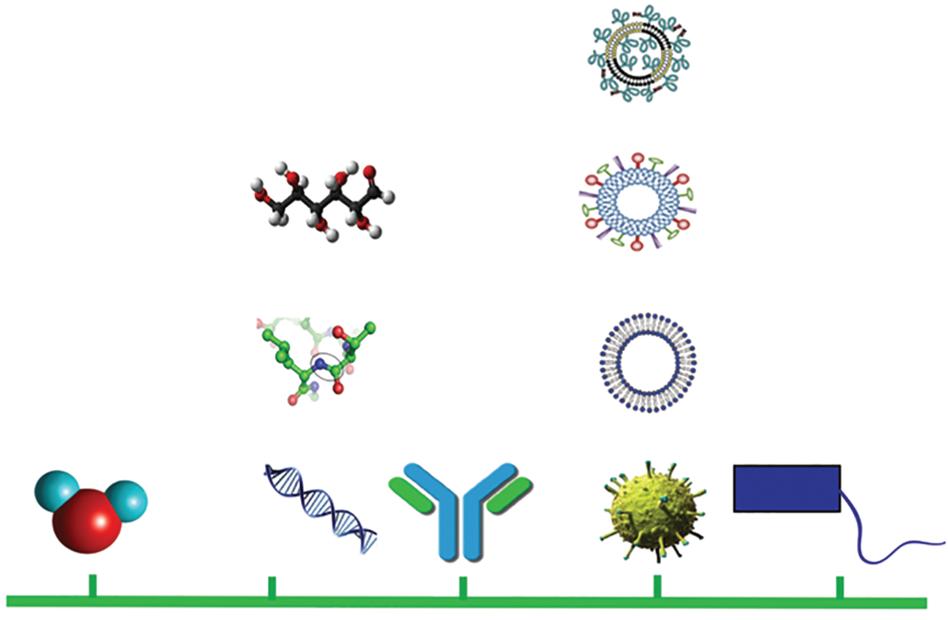
Figure 1.3 The size comparison of various biological systems used in nanovaccinology. Reproduced (adapted) from [36]. Copyright 2016, IntechOpen.
1.4 Nanotechnology to Tackle the Challenges of Vaccine Delivery
1.4.1
Polymeric Nanoparticles
Polymeric NPs can be made by polymerizing monomeric units or by using synthesized polymers. The customizable qualities, size, composition, and surface properties of these NPs make them appealing in the medical industry because they allow for regulated release and drug molecule protection [37]. Poly (lactic acid) (PLA), poly (glutamic acid) (PGA), PLGA, and chitosan are the most frequently used polymeric NPs for vaccine formulation [19]. The chemical structure of polymeric NPs is designed to behave differently in different environments to control the release rate. The function and uses of other polymeric NPs vary substantially depending on the inherent chemical and biological effects in distinct materials [38]. PLGA is a biodegradable and biocompatible polymer that can undergo in vivo hydrolysis [39] and encapsulate and release different biomolecules over time [40–42]. Under physiological conditions, these NPs may incorporate
antigens and inhibit their destruction for one month, which is crucial for vaccination [43]. Furthermore, PLGA NPs promote antigen processing and display to susceptible cells by promoting antigen uptake by APCs [44]. Other NPs, chitosan, and N-(2-hydroxypropyl)methacrylamide/N-isopropyl acrylamide were also investigated as vaccines preparation [45–47]. Chitosan is a favorable and promising polymer for DNA vaccine formulation because of its cationic character, which allows attachment to the DNA, generating DNA–polymer interactions that protect DNA from enzyme hydrolysis. It is indeed extremely hydrophobic, inactive, and non-immunogenic, with bioadhesive properties that facilitate mucosal vaccination techniques. Chitosan has been further discovered to have natural adjuvant properties, stimulating dendritic cell maturation to enhance T helper 1 (Th1) responses [48]. Over the years, multiple developments have resulted from chitosan-based NPs delivery technology, including a therapeutic potential anti-tumor papillomavirus (HPV) vaccine [49], treatment methods for influenza A [50], highly contagious myocarditis [51], and some livestock diseases such as Newcastle disease (ND) virus [52, 53] and Noda virus [54]. Polymeric NPs have biocompatibility, antigen encapsulation and stability, regulated release of antigens, cellular retention in APCs, microbe characteristics, and delivery feasibility [55–57]. As the research advancements of polymer science continue, vaccine technologies will develop accordingly.
1.4.2 Inorganic Nanoparticles
Inorganic NPs have sparked a lot of interest in vaccine formulation because of their simplicity in drug loading and bioactivity properties. Furthermore, their thermochemical stability makes sterilization easier [58]. Inorganic materials are relatively nontoxic and can be manufactured in a variety of sizes, forms, and dimensions. Gold (Au) NPs are a popular inorganic nanomaterial used in vaccine delivery because of decreasing toxicity, increasing immunogenic activity, and providing vaccine storage stability [59]. Another extensively investigated composition for vaccine delivery is carbon NPs [60] which has good biocompatibility [61, 62]. Protein and peptide antigens can be coupled on CNTs for delivery, which has increased IgG response levels [62–65]. Mesoporous carbon NPs have been studied for use as an adjuvant in vaccinations [62]. Silica is another promising material for nanovaccinology because of its biocompatibility and having excellent properties as nanocarriers. Silica NPs’ size and form can be altered selectively to regulate their cellular interaction [66]. Many silanol groups on surface are advantageous for introducing additional functionalities, such as cell recognition, biomolecule absorption, improved cell contact, and
8 Nanovaccinology as Targeted Therapeutics
cellular uptake [67–69]. It is revealed that DNA vaccine incorporated into SiO2-layered double hydroxide induces antibody response as well as boosts T-cell multiplication and pushes T helper (Th1) cells toward Th1 activation [70]. Superparamagnetic iron oxide NPs (SPIONs) is another inorganic material for nanovaccinology. SPION-based vaccine delivery system is modified to improve the stability of vector and APC targeting ability to ensure prolonged exposure in the target area [71]. Other nanomaterials have been used as vaccine delivery vectors and adjuvants, including silver (Ag) NPs and calcium phosphate NPs [71, 72].
1.4.3 Biomolecular Nanoparticles
The biomolecular materials have a number of advantages that make them attractive candidates for synthetic vaccine preparation. They are biologically inspired systems that are built on the basis of biomolecules. Biomolecular materials benefit from transporting a range of carriers and displaying diverse moieties on their surfaces [19]. Although a number of biomolecular NPs have been investigated, liposomes, virus-like particles (VLPs), micelles, and immunestimulating complexes (ISCOMs) (Figure 1.4) are the four most widely used materials for vaccine applications [60].
Figure 1.4 A schematic illustration of various NPs that have been used as vaccinations [60]. Reproduced (adapted) from [60]. Copyright 2013, Frontiers.
1.4.4 Liposome
Liposomes are sphere NPs comprised of lipid layers [73] which are formed when lipids with a hydrophilic part and a hydrophobic part combine in water. Liposomes can encapsulate a variety of medications and be utilized for regulated delivery for their substantial therapeutic uses [74]. There has been a lot of research done on liposomes and their vaccine potential. Liposomes have the advantage of being able to be modified to obtain desired immunostimulatory effects. A unique nanovaccine system targets inflammatory cells and increases innate immunity to T cells against a mimic antigen created by modifying liposomes to have lectin binding mannose on their surface and trapping monophosphoryl lipid A (MPLA) adjuvant [75]. While liposomes have been used to administer vaccines against various infections, one particularly intriguing application is tuberculosis prophylaxis, a fatal disease [76]. Virosomes have been used in clinical trials for a number of preventive purposes, including tetanus and hepatitis B vaccinations [77]. It is recently shown that virosomal immunizations could be programmed to selectively activate T lymphocytes, improving immunization protection against influenza infection [78].
1.4.5 Virus-Like Particles
Another biomolecular NPs known as VLP has a typical virus shape but lacks viral genome, rendering them inactive and unable of replication. They quickly and effectively produce a strong and prolong immunological response in the host [79]. Hepatitis B protection is provided first with a VLP-based human vaccination[80]. VLPs have recently been used as vehicles for several human papillomavirus (HPV) vaccines. According to a recent study, HPV vaccinations based on VLPs elicit a strong crossprotective antibody response [81]. During chronic infection, cytotoxic T cells are essential for removing damaged cells and regulating microbe load. They can really be highly effective in vaccines because they target the T-cell response.
1.4.6 Micelles
The cores of micelles, another type of biomolecular NPs, are hydrophobic in contrast to liposomes and VLPs [82]. They are widely used with weakly water-soluble drugs delivery or encapsulated amphiphilic compounds [83]. Micelles have been used in two different ways as vaccine delivery systems. First, protein vaccines may be simply covalently attached to the
hydrophilic micelle. HIV vaccines have been attached to adjuvant-loaded micelles using this approach, resulting in significant APC activation in vitro [84]. Model peptide antigens coupled to polymer-lipid microspheres are demonstrated to attach protein albumin and travel to the lymphatic vessels, where they significantly raise T-cell numbers and act as an anticancer vaccination [85]. Endosome disruption can be triggered by polymer-based micelles, allowing vaccines to be transported to the cytoplasm, resulting in significant cytotoxic T-cell responses [86]. Molecules with similar or identical hydrophobic moieties can also be self-assembled and form heterogeneous micelles. This phenomenon has been utilized to create protein amphiphile microspheres capable of transporting several antigens to the same cell [87].
1.4.7
Immunostimulating Complexes
ISCOMs are biomolecular structures. They are made up of cholesterols, phospholipids, and Quil A saponins. ISCOMs have an immunostimulatory effect because they contain Quil A saponins, which are well-known adjuvants. ISCOMs have been studied for around 35 years to be highly effective as a synthetic vaccine [88]. Still, they can cause significant, unfavorable injection-site reactions [89], limiting their use to animal vaccinations [90]. ISCOMA-TRIX is identical to the traditional ISCOM except that the Quil A saponins are first filtered to give a specified group of saponins that do not induce substantial inflammation [91]. ISCOMA-TRIX has been demonstrated to produce immune responses in mice and rabbits [92].
1.4.8 Self-Assembled Proteins (SAPNs)
SAPNs are 20–30 nm icosahedrons. For the manufacture of NPs-based vaccinations, self-assembling technologies promote higher levels of protein quaternary structure. By genetic engineering technique, attaching the influenza virus with ferrintin, researchers could generate a stronger immunological response than the flu vaccine [93]. Another protein is the major vault protein (MVP). For studies of mucosal immunity, Vault NPs are utilized [94]. SAPNs have been shown to improve immunity in a various of diseases, including malaria [95], HIV [96], toxoplasma [97], and severe acute respiratory syndrome [98]. Then encapsulate two HIV protein epitopes onto SAPN surface produce epitope-specific neutralizing antibodies more efficiently. This suggests that SAPN could be used as a nanovaccine to trigger an immunological response against HIV [96].


